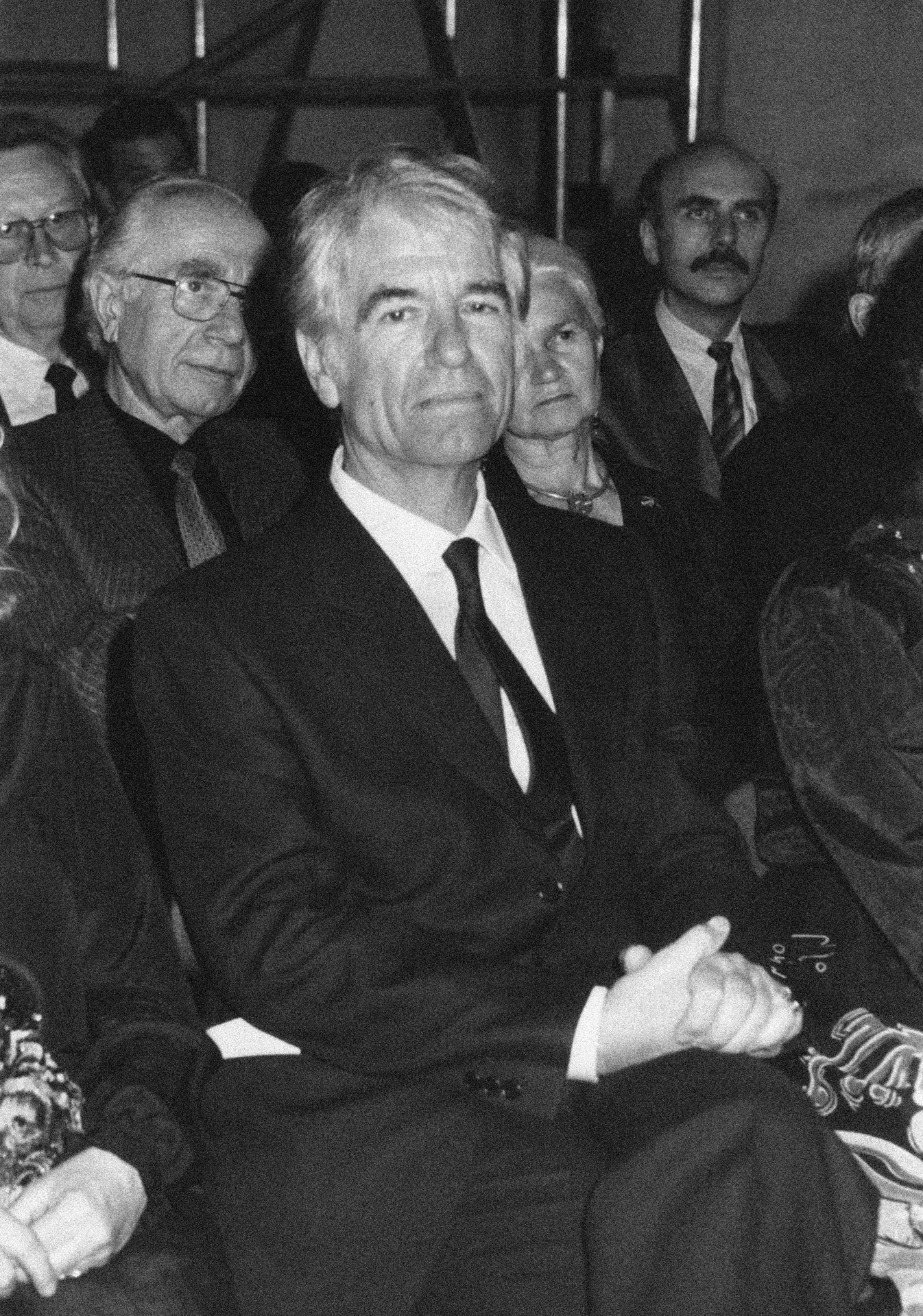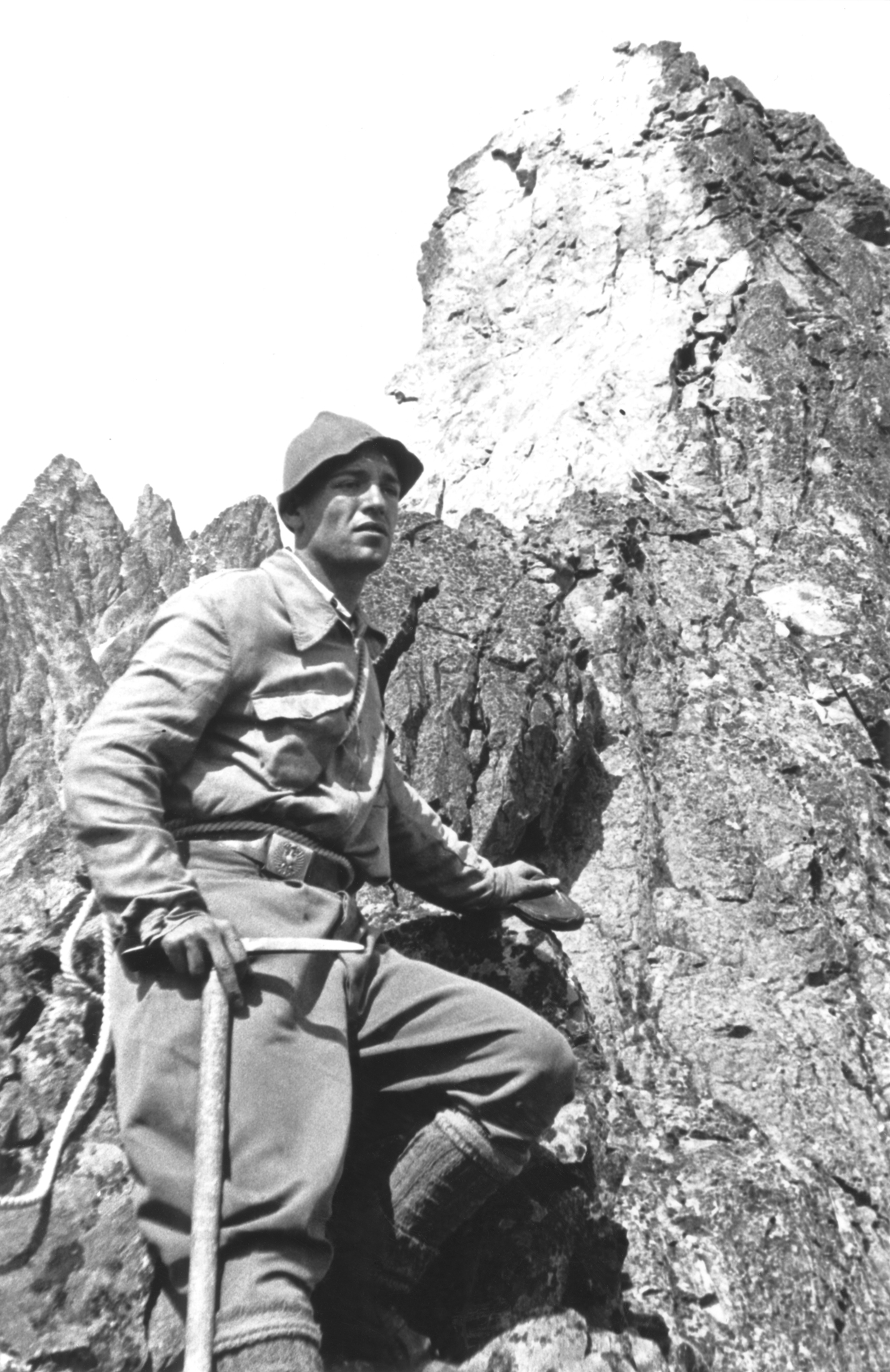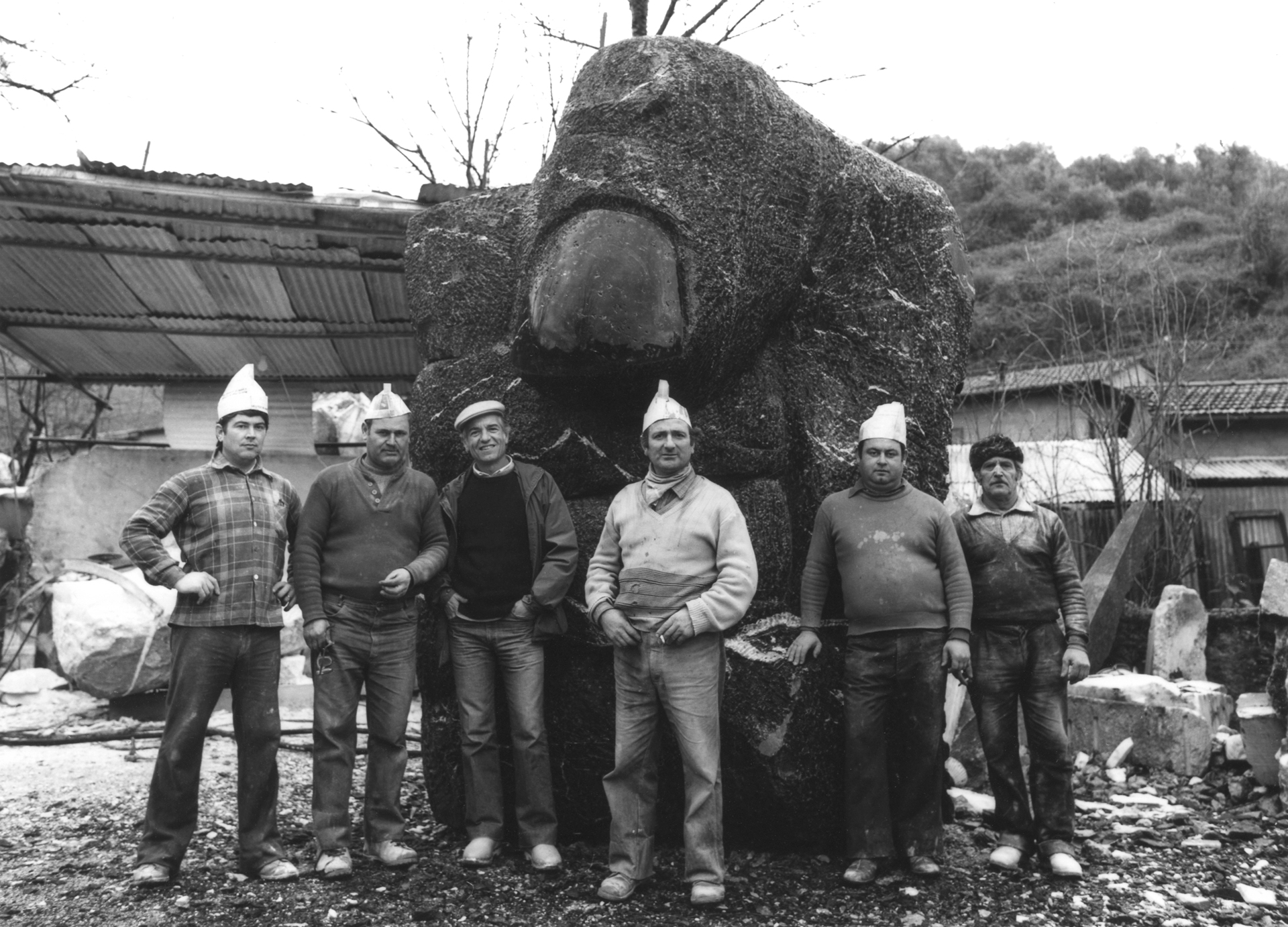Bruno Martinazzi. Journey into the Soul
min
Reading Time

The Italian grand seigneur was linked to the Bavarian metropolis not only through his friendship with the later academy professor and Munich goldsmith Hermann Jünger, but also through his collaboration with Herbert Hofmann and his successor Peter Nickel. Both were responsible for the jewelry exhibition held annually at the International Crafts Fair since 1959.
Also associated with Munich was the award of the Bavarian State Prize in 1965, which was followed by the Golden Ring of Honor of the Society of Goldsmiths in Hanau in 1987.
For many years, Martinazzi, who embodied Italianità like no other with his jewelry objects, most of which were worked in gold, accompanied the work of the Neue Sammlung and the Danner Foundation with great, friendly interest. One of the highlights was the joint exhibition “Bruno Martinazzi. Memory Maps” in 2011.
Back in 2005, Bruno Martinazzi was invited by Die Neue Sammlung to give a lecture at the Pinakothek der Moderne as part of the “All About me” series on his path to becoming the unique artist whose work we all admire and which had an essential impact on the development of author’s jewelry worldwide.
From the Neue Sammlung’s point of view, what could be more natural than to let him speak again at the end of his journey and to reproduce the lecture in a greatly shortened form and in excerpts.
Petra Hölscher
(…)
As a child, I tried to do the same things that my father had done with passion. My mother told me about his love of the mountains and photography. I played with the chemicals and with his developing equipment in a rather unprofessional darkroom and watched as fairytale mountains appeared. (…) Mountaineering became my passion. In 1947, after four years away due to the war, I returned to the mountains.
(…)

(…)
There is a time that destroys and a time that saves. I believe that time gives us something, but only if we recognize this and know how to protect our things: This is the ‘soul’. The soul is where the things that are absent gather: everything that we are forced to separate ourselves from, our desires and everything that has no place in reality. I try to understand myself and others, but to achieve this goal I need my hands and my body, just like climbing a mountain.
(…)
“I know that I cannot achieve perfection and beauty, but I can work in beauty, I can strive for beauty and make art.”
(…)
I took violin lessons at the age of ten. My teacher wanted me to dedicate myself to music. My family was against it and I studied chemistry until I graduated. When I turned 30, I finally took up art, but it was too late for music. (…)
‘Matter longs for a form like a sick person longs for health’, said Meister Eckhart, a famous German mystic. Stone and gold wait patiently: gold is imperishable, and it is as if the stone takes on a soul in the course of time. ‘There are stones that warm like hearts, and hearts that are cold like stones’ (Talmud). The forms that await liberation are in the souls of poets and therefore of all people. The famous Italian poet Giacomo Leopardi deals with the most serious themes in a poem: the infinite, life, death. However, these are presented with lightness, and the grace of his words makes heavy things light and light things heavy. I try to let the art to which I have devoted myself emerge from beauty. I mean the beauty of classical antiquity, which I have inherited from those who have drawn knowledge from it before me. This knowledge must be protected from carelessness and senselessness.
Recent research has shown that a significant part of the cortex (in the brain) controls hand movements. Driving a flake of gold or chiseling the stone are opposite and mirror-image activities or, if you like, games: The burin expands the flakes, the chisel reduces the stone block. Tools with different tips and hammers with different weights and shapes are used.

Apparently there is a continuity, but the games are indeed different. The sculptor works outdoors, in nature, often together with other people. The goldsmith works alone in a closed room, concentrating on a small object that he forges with fire.
Sculpting is collision / embrace, the gold requires fingers of strength and tenderness.
“In sculpture, form and strength are revealed after the work is almost complete, whereas in goldsmithing the form comes to light immediately; however, it is very fragile at the very beginning and must be nurtured and strengthened.”
In a way, the sculptor is comparable to a titan, the goldsmith to an alchemist and shaman. The alchemist observes, researches and tests matter: his tools are water, fire, myths and philosophy. The shaman acquires his knowledge from indeterminate forms. Making art means learning and knowing. Making and creating something with body and soul helps to understand reality. What we call art is ‘this original connection of soul, eye and hand’.
‘Man can recognize himself as the core of action and devotion, of hands and mind’ (quote from Giordano Bruno, The Expulsion of the Triumphant Beast).
1968 was the year of the student protest. I was teaching in Savona. It was like a wave, this desire for change that set society in motion. There was also a turning point for me in my work. My expectations were soon disappointed, and as a result my perception of the world changed; the tidal wave had receded, leaving behind the remains of a destroyed reality.
When I initially look at these fragments with irony, I feel increasingly inclined to reassemble them, to redeem them, to bring them back together in an overall picture. But not the final fragments, but units that strive for the whole.
(…)
There is a word in ancient Greek, THUMŌS, which has had a variety of meanings since Homer. It can be translated as longing, breath of life, breath of the soul; perhaps the German word ‘Streben’ expresses this meaning. Ovid’s work ‘Metamorphoses’ has always been an inexhaustible source of metaphors for poets and artists in Italy, where myth is often used. Myth is oral history, narrative, knowledge before logos, fairy tale. Here, myth is not the form that absorbs and calms our thoughts. Here, the artist uses myth to give power to his thoughts. The artist does not withdraw in his longing, he enters with his power into the present life, the moment in which the form is created.
For me, America was the land of Stardust, Flash Gordon, Jean Harlow and Wallace Beery. I once thought freedom radiated light. Now I no longer see that light. The mouth is constantly changing in shape and meaning. Now a sword has split it in two, its beauty is deeply wounded. However, the violence cannot destroy its dignity, the lost beauty has not been erased.
The concept of chaos / injury becomes the concept of chaos / opening. On the one hand, the split means that the whole has been lost, on the other hand, life can be born from the opening. In mythology, at the very beginning there was chaos, which gave birth to the earth.
This concept of injury can be found in the works about Narcissus. Narcissus also shows a split. This injury is incurable. Narcissus is separated from his reflection by the mirror; he wants to acquire it instead of gaining knowledge through it. Originally, knowledge appears with joy. Instead of loving beauty, Narcissus wants to appropriate it: However, beauty can only be touched, questioned, feared, learned: ‘Truth is beauty and beauty is truth’. The mirror reflects images of things that are behind the viewer. What is behind us is already the past, is what we think about. But life happens before our eyes. In the mirror there is only the past, not life. Narcissus succumbs to temptation and falls into a deadly trap: if you want to give to the body what belongs to the spirit, then the body is lost. Narcissus turns into a flower and loses his body.
(…)
Love… each of us has an experience that could be told. What is a kiss? A promise? Evoking the unspeakable? What is love?
Dante writes in the Divine Comedy, Purgatory, Canto 18, verse 25: ‘(from the spirit of man) and this direction, this leaning towards / loving’ is it…’ A very slight movement of the soul, that is the origin of a flame, ‘… (of the mind) that does not rest until what it loves is given over to enjoyment’. And again Dante says that the highest expression of love is to understand the good. Hölderin says: ‘For joy you must understand what is pure’ and speaks of ‘enduring what is currently incomplete’.
(…) Poetry, myth, religion and philosophy (…) become images of the soul, monograms of the ‘ONE’, the ‘hidden God’. They are triads: the Heart of Heaven, a myth of the Quiché Empire (today’s Guatemala), the attempt to summarize the essence of an idea using a synthesis, an abbreviation. The Greek triad of the gods of medicine: Aesculapius, Hygieia, Telesphorus (the child god). All of them together protect us from disease. Hesiod writes in his work ‘Erga’ (Domestic Doctrine) that humans were created similar to gods. This was called the Golden Age.
In this age, humanity began its decline into evil and suffering. Raimondo Lullo, poet, alchemist and mystic from Catalonia, wrote in his work ‘Ars Brevis’ around 1300: ‘Man is an animal that becomes human’. The classical poets placed what they saw as the future in a mythological past. I would interpret Hesiod’s myth completely differently: In contrast to him, the Golden Age and the lost paradise are just metaphors intended to express man’s highest, hidden aspirations.
(…)
“The gold took me on a journey into the soul. The dialogue with the stone awakened a feeling of time in me. As I worked, I asked myself: Why is the stone so heavy?”
The stone I was working on came from a mountain, from a landscape surrounded by rhododendrons and blueberry bushes. And even earlier, millions of years ago, this stone was there, as I could see from my geological maps.
Slowly I came up with a symbolic weight/time equation, as I illustrated in my work ‘Matter and ‘Time’.
I compared our safe, known units of measurement with the units of matter, which can be measured in millions of years. It is a magnitude that exceeds our comprehension, it is the infinitely great. And yet, as I worked, it was as if I could reach this infinite, the eternal. Time and beauty of matter, hidden in simple figures such as weight, meter stick, vessel, thumb. A most disturbing reset of the ego.
(…)
The hand expresses power, it transforms and shapes matter. I think of the sea, of its destructive power, and think of life, of its ever-creative power. The hand can both create and destroy.
Measure and form are intended to direct power, which in and of itself is neither good nor bad. It is simply vital.
(…)
The figures that I carved in gold are returning today after many years, and the question always remains the same: Where is Abel, your brother? The second part of the Beethoven Sonata op. 111 sounds like a heartbreaking question. The sonata’s grueling theme repeats itself several times with its ‘extraordinary variations’, evoking harmony, feelings and concerns. There is no answer, but the human consciousness is becoming stronger. Those notes contain the whole of life, the most essential and purest of thoughts, feelings and fate.
Is it possible that in the art of jewelry, that is, in that detail that is added to the body and which shows the uniqueness of the wearer, the essence of the person, the unseen that characterizes the person – is it possible that in the art of jewelry something similar happens?
Even in prehistory, people decorated their bodies with valuable objects – valuable because they convey values that cannot be expressed in any other way. They testify to man’s desire and ability to transform himself and represent that act by which man sanctifies something, an object different from all others.
“The history of the jewelry reflects the spirit of people: their aspirations, their desires, their values. The art in jewelry is a value that makes it even more valuable. Wearing these things means demonstrating optimism, putting hope in life.”
I was unable to mention numerous works, including important ones. But in all of them the striving for knowledge and understanding is expressed more or less clearly.
As the serpent says in the Bible: ‘ERITIS SICUT DII (you will be like God), SCIENTES BONUM ET MALUM (and know what is good and evil) ET APERIENTUR OCULI VESTRI (and your eyes will be opened)’. And their eyes were opened. The light represents the revelation of truth while the eye is a symbol of knowledge.
Dante in the work ‘De Monarchia’ talks about ‘Oculi mentis’, the eyes of sense.
(…)
I have spoken about the soul, about the beauty and about the form: they are words that unite us. I quote from Shelley: ‘A single word even may be a spark of inextinguishable thought’. A conductor once said to me that ‘letting a small flame burn and passing it on to others’ is what we can still do today. We are currently in the process of erasing everything from our memory, not just the culture of classical antiquity, but our entire past.
We must gain a silence that enables us to hear and observe again.
I think the message of my work is to make a confession, an invitation to pause, to be on a first-name basis with things, to be completely with yourself, to be happy, to think together, to understand, to listen.
I would like to thank Bruno Martinazzi’s widow, Carla Gallo Barbisio, Ellen Maurer-Zilioli, Karl Bollmann and Arnoldsche Art Publishers, who agreed to reprint the lecture, only reproduced here in part, which was first published in its entirety in: Ellen Maurer Zilioli / Karl Bollmann, Bruno Martinazzi, L’Oro E La Pietra, Stuttgart 2007, pp. 6-41.
The article was first published in Art Aurea